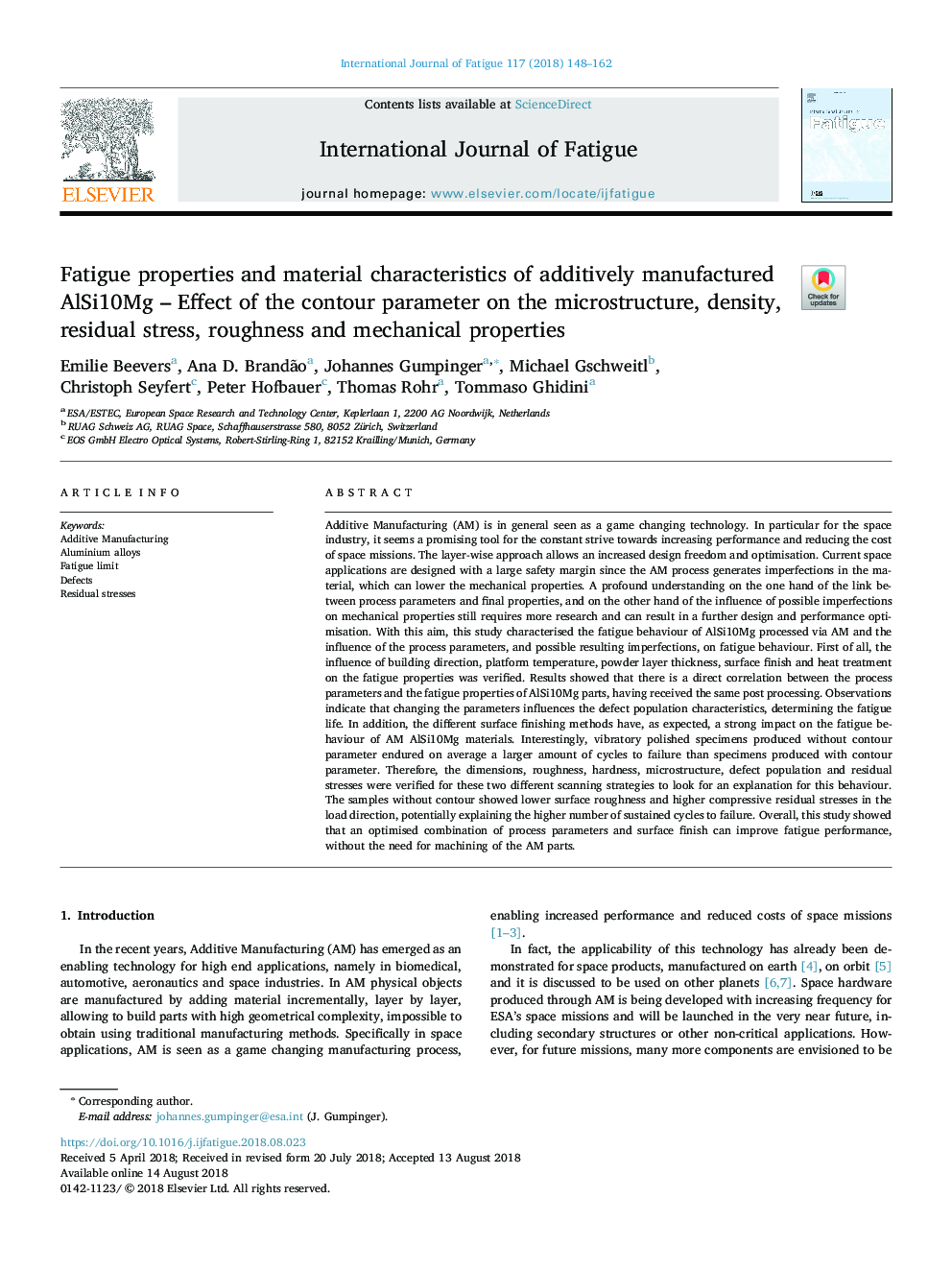| Article ID | Journal | Published Year | Pages | File Type |
|---|---|---|---|---|
| 11003912 | International Journal of Fatigue | 2018 | 15 Pages |
Abstract
Additive Manufacturing (AM) is in general seen as a game changing technology. In particular for the space industry, it seems a promising tool for the constant strive towards increasing performance and reducing the cost of space missions. The layer-wise approach allows an increased design freedom and optimisation. Current space applications are designed with a large safety margin since the AM process generates imperfections in the material, which can lower the mechanical properties. A profound understanding on the one hand of the link between process parameters and final properties, and on the other hand of the influence of possible imperfections on mechanical properties still requires more research and can result in a further design and performance optimisation. With this aim, this study characterised the fatigue behaviour of AlSi10Mg processed via AM and the influence of the process parameters, and possible resulting imperfections, on fatigue behaviour. First of all, the influence of building direction, platform temperature, powder layer thickness, surface finish and heat treatment on the fatigue properties was verified. Results showed that there is a direct correlation between the process parameters and the fatigue properties of AlSi10Mg parts, having received the same post processing. Observations indicate that changing the parameters influences the defect population characteristics, determining the fatigue life. In addition, the different surface finishing methods have, as expected, a strong impact on the fatigue behaviour of AM AlSi10Mg materials. Interestingly, vibratory polished specimens produced without contour parameter endured on average a larger amount of cycles to failure than specimens produced with contour parameter. Therefore, the dimensions, roughness, hardness, microstructure, defect population and residual stresses were verified for these two different scanning strategies to look for an explanation for this behaviour. The samples without contour showed lower surface roughness and higher compressive residual stresses in the load direction, potentially explaining the higher number of sustained cycles to failure. Overall, this study showed that an optimised combination of process parameters and surface finish can improve fatigue performance, without the need for machining of the AM parts.
Related Topics
Physical Sciences and Engineering
Engineering
Mechanical Engineering
Authors
Emilie Beevers, Ana D. Brandão, Johannes Gumpinger, Michael Gschweitl, Christoph Seyfert, Peter Hofbauer, Thomas Rohr, Tommaso Ghidini,
